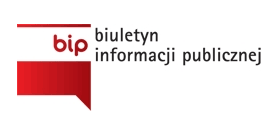English
Infrastructure
2012.03.08 11:55 , aktualizacja: 2012.03.08 12:00
Autor: , Wprowadzenie: Joanna Czechowicz-Bieniek
Out of the 10 pan-European transport corridors four cross through the territory of Poland, of which three cross through the area of Mazovia:
Corridor I – from Helsinki, through the Baltic States to Warsaw includes the national road E67 (No. 8) - "Via Baltica” and the railway line E75,
Corridor II comprises the national road E30 (No. 2, future A2 Motorway) from Berlin through Warsaw to Moscow and Nizhny Novgorod as well as railway lines E20 and CE20.
Corridor IV running from Gdańsk through Warsaw, Katowice to Zylina and Ostrava includes the planned A1 Motorway, the railway line E65 (the Central Railway Line) and the second road link through Warsaw: E77 (No. 7) at the northern section and E67 (No. 8) from Warsaw to Piotrków Trybunalski (A1).
The Warsaw agglomeration is one of the largest in Poland transport interchange, which comprises 6 national roads and 8 railway lines of national importance as well as the main national airport.
The primary road system of Mazovia is based on the radial, historically formed network converging in Warsaw, which provides a prerequisite for a relatively good access to the capital from the peripheries of the region. The road network within the area of the voivodeship is made up of 28,824 km (2008) of hard surface roads. The density of this network is on average 81 km/100 km² (the national average) – with fairly substantial spatial differentiation – the network of hard surface roads is less dense in the north-eastern part of the voivodeship.
Warsaw functioning as the capital and the almost-central location of the voivodeship in Poland have affected the formation of the transportation system in the region. Warsaw functions as a national transport hub in road, railway and air traffic. Large funds, also originating from the European Union, are allocated for the construction and extension of the road infrastructure. Main national roads and international roads crossing through Poland run through Mazovian Voivodeship towards Warsaw. The distances between the Capital and main towns of Mazovia are as follows: to Ciechanów – 100 km, to Ostrołęka – 115 km, to Płock – 111 km, to Radom – 102 km and to Siedlce – 89 km. One of the most important for Poland international roads runs from Berlin through Poznań, Sochaczew, Warsaw, Siedlce to the border in Terespol and further onto Minsk. In the future it will become A2 Motorway. Mazovia has good transport accessibility resulting from its favourable location within the system of roads and railways, as well as the location in Warsaw of Poland’s largest airport under the name of Frederic Chopin.
The Road No. 7: Gdańsk – Mława – Płońsk – Warsaw – Grójec – Radom – Kraków as well as the Road No. 8 from Warsaw through Rawa Mazowiecka, Tomaszów Mazowiecki to Wrocław are both of significant importance. In time the two roads are to be upgraded and become express routes.
Large funds, also originating from the European Union, are allocated for the construction and extension of the road infrastructure, also within the context of the preparations for the EURO 2012 European Football Championship. They will contribute to qualitative improvement of the class of roads and travelling comfort.
Air transport
Frederic Chopin International Airport in Warsaw is the largest and most important national and international airport in Poland. One of its strengths is its location at a short distance from the city centre (10 km). From Chopin Airport in Warsaw airplanes depart to several cities in the country and several dozens in Europe, Asia and North America. Around 87% of the foreign and around 43% of the domestic air traffic is concentrated at the airport. At present, Warsaw has over 80 regular flights with airports in the country and around the world. The number of chartered flights is increasing. In 2010, the Warsaw airport handled almost 9 mln passengers. The special VIP Aviation terminal is provided for passengers and crews of private and corporate aircrafts under the so-called general aviation traffic.
The opening of an airport in Modlin will have a considerable impact for the handling of domestic and international air passenger and cargo traffic. Warsaw-Modlin Mazovia Airport LTD. since June 2012 will fulfill the role of regional public use airport, complementary for Warsaw Chopin Airport. It will serve mainly international short-haul and medium range routes, as well as domestic routes between regional airports. Investment is dedicated, infrastructure tailored first of all to low costs and charter carriers, but other carriers are also welcome. Flight operations will be provided 24h a day.
Today Warsaw/Modlin airport is a non-public use airport, used for GA and flight schools.
Furthermore, airports of local importance will be located in Sochaczew and Radom.
Rail transport
The characteristic feature of the rail transport system in Mazovia is the international importance of the railway lines in the following directions: north – south and east - west as well as the dominance of the Warsaw agglomeration in terms of the number and importance of the railway lines converging there. Most of the railway network of Mazovian Voivodeship comprises the lines under the European agreements as well as those of national importance.
For more information:
Mazovia Development Agency Plc
ul. Nowy Zjazd 1, 00-301 Warsaw
Tel. No.: + 48 22 566 47 60
Fax: + 48 22 843 83 31
e-mail:
www.armsa.pl, www.coie.armsa.pl
Postal Address:
ul. B. Brechta 3, 03-472 Warsaw
Pliki do pobrania
Liczba wyświetleń: 453
powrótSzanowni Państwo, jeżeli opublikowany artykuł nie jest prawidłowo odczytany przez czytnik ekranu, prosimy o przesłanie uwag do artykułu wraz z podaniem linka do informacji, której dotyczy pytanie. Postaramy się udostępnić bardziej czytelny plik.




